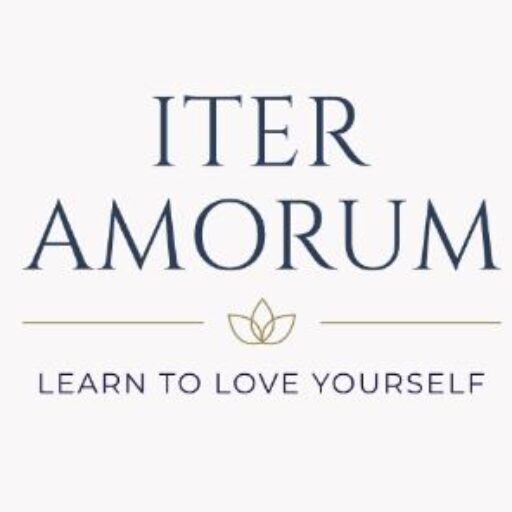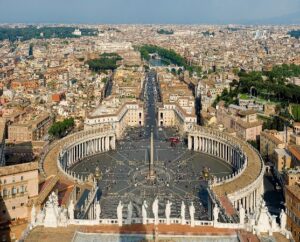Published on September 27, 2024
DESCRIPTION
Problematize the concepts religion and society in accordance with relevant source material and examples of the historical and social contexts of ancient Scandinavian religion.
INTRODUCTION
Religion and society bond together since the dawn of humanity, as we can see in the book of Genesis (Genesis 4: 1-26) where forefathers, Adam and Eve, formed the embryo of the future community.
Similarly, the same situation can be observed in the Prologue of Prose Edda when Odin forms and imposes his sons as the rulers of the conquered lands (Snorri Sturluson, 1987, pp. 1-4) with the amendment that they will be worshiped by humans who forgot their creator was leading in this way to a form of pagan religion developed in the space we now call Scandinavian areal – Norway, Sweden, and Denmark.
Thus, the argument about the Scandinavian religion and society needs to be performed synergistically taking into consideration that religion supposes a sacred dimension and space (Lindow, 2002, p. 1) and a time of manifestation.
From a broad perspective, the ancient Scandinavian society interwinds with religious elements acting upon the concept of do ut des.
Therefore, the Pantheon of Gods and Deities took care of each aspect of life but demanded in change rituals and celebrations that delivered everybody’s welfare.
This paper will focus on the problematization of religion and society of ancient Scandinavian space offering examples of historical and social contexts that illustrate the assumptions.
RESULTS
From the beginning, we need to state that the concept of old age in Scandinavian history is usually mixed with the term Viking age, these two notions having the same connotation in the public conscience.
Olof Sundqvist (2002, p. 9) stipulates in his research, centered on the “relationship between rulership and religion in the society of the ancient Svear”, the following:
 (Olof Sundqvist, 2002, p. 6)
(Olof Sundqvist, 2002, p. 6)
From a strictly historical perspective, Vendel Period set the stage for the Viking Age. While Vendel Period is a static one, based on growth and establishing power, Viking time focuses on conquests mainly by sailing to Europe.
These eras have in common the pantheistic religion generally named Norse Paganism.
The most prominent view regarding Norse Paganism, presented by Thomas DuBois (1999), states that this is not a religion per se, but a manifestation of decentralized communities of beliefs based on local deities.
During that time, people interacted with each other, even at the sacred level, contributing to realizing a political and economic whole. (Thomas Andrew Dubois, 1999, p. 5)
To begin an argument regarding religion and society in Ancient Scandinavia, we need to focus our attention on the significance of the concept of Viking, as it was perceived by the Europeans.
We know from various sources that Vikings started their warlike actions through the sea, attacking Europe somewhere between the finish of the 8th century and the end of the 11th century, and leaving behind them a series of legends and mysteries that still arouses the interest of ordinary people and researchers. (Thomas Andrew Dubois, 1999, p. 11)
The basic concept of ancient Scandinavian society consists of sacred kingship (Olof Sundqvist, 2002, pp. 20-23). Though the author debates the consistency of this notion, there is a continuity of it with the divine ruler as it was represented by Odin and his sons.
More than this, the divine ruler acts as the leader of the army and as the officiator of the cult (Olof Sundqvist, 2002, p. 14), as a continuation of the main four Gods – Odin, Thor, Freyr, and Freyja. (Ellis H R, 1981, p. 211)
This is an example of a social Norse Ancient organization that illustrates the idea that religion and secularism were mixed during the Viking Age. Therefore, speaking of the king is the same as talking about a god.
From this point of view, the king is the social and religious ruler imposing laws, making connections, and being the high priest.
The other members of the ancient Scandinavian society interfere with each other having their own roles to play, but the king is the one who ensures the social and religious order in connection with the cosmic laws, although recent studies demand that the Scandinavian society needs to be investigated at all levels of evolution. (Olof Sundqvist, 2002, pp. 25-26, p. 63)
Another important fact in promoting a certain type of community or religion is that the society in Ancient Scandinavia was completely based on the oral transmission of information, so the main way to retain the stories or the laws was the mortal memory. (Lindow, 2002, p. 12)
Thou mainly oral, Ancient Vikings uses the runes to write some of the most important religious and social facts.
The stone of Rök, in Ostergotland, Sweeden, is the longest-written text that uses the runic alphabet, erected by a local chief, in the 9th century, for his son’s memory. On this runic stone is set into eternity a mixture of secular and religious aspects of life, another proof that these two concepts can not be treated separately but as a whole.
From these perspectives, and having into consideration that the speaker adapted their speech to a certain type of audience, we can conclude that the stories differ from one time to another and the certitude about the historical and religious facts is not set in stone. Much of the historical proof is taken from Roman and Anglo-Saxonic sources and archaeological evidence. (Olof Sundqvist, 2002, p. 61)
The most important aspect of the Ancient Norse era was the strong connection between Svea rulers and their religion. This idea is reflected by the idea that Uppsala – often mentioned in the written sources – is now considered a cult site that stands as validation for the concept that religion was part of the Norse society, and it was the privilege of the rulers seen as social and religious leaders of the people. (Olof Sundqvist, 2002, p. 91, p.91, p.95)
Here is necessary to mention that Ancient Viking society was a decentralized one, and a kind of unification happened during the Late Iron Age, but there is not completely clear if a priest was the one who performed the rituals or if this religious activity was conducted by the rulers only.
Another important aspect of Ancient Scandinavian society is the problem of war. This concept can not be attributed strictly to the social side or the religious one, since the military acts were seen as a global manifestation of facts and beliefs and since warfare was sacralized by rituals. More than this, Odin, the god of war, is depicted throwing a javelin as a ritual gesture to launch the war against Vanir. (Olof Sundqvist, 2002, pp. 106-107)
The ritual is as well present in the moment of birth when the newborn child needs to be transformed into a member of society. To accomplish this, sacred actions have been performed such as sprinkling water on the baby and giving it a name.
These two gestures are included into two categories – the ritual of separation (sprinkling the water) and the ritual of integration (giving a name to the newborn baby). (Jens Peter Schjødt, 2008, p. 329)
The idea of ritual exists in the context of the transition from an ordinary man to the condition of a leader or a king. And the grandeur of the occupied position – a small chieftain or a ruler – does not lead to an exception in performing the ritual. (Jens Peter Schjødt, 2008, p. 373)
DISCUSSION
Relying on various sources of research, one might try to dive into the problem of religion and society of Ancient Scandinavia to understand it completely and decipher the myths and the mysteries. No matter how much we will try and how long time we will dedicate to studying Norse religion and society, it is almost impossible to have the whole perspective of that era. (Jens Peter Schjødt, 2008, p. 107)
Since their incursions in Europe, the Vikings’ world sparked the interest of the people who began to pay attention and understand that Norse mythology is more complex and subtle than what we can see on the first side. Nowadays we are witnessing an avalanche of Marvel films that are based on the Scandinavian myths and this generated a whole entertainment industry.
SUMMARY
The importance of Norse mythology can not be discussed nor illustrated without the meaning of the Ancient Scandinavian society, which functioned on the idea that all human actions are ritualistic ones dictated by the sacred world of Gods who ruled the universe. The pagan men saw themselves as an intrinsic part of the Universe, a concept that erased the border between sacred and profane as they were presented in Mircea Eliade’s perspective.
BIBLIOGRAPHY
Ellis H R, D. (1981). Gods and Myths of the Viking Age. New York: Bell Publishing Company Jens Peter Schjødt (2008). Initiation Between Two Worlds. Syddansk Universitetsforlag
Lindow, J. (2002). Norse Mythology: A Guide To The Gods, Heroes, Rituals, And Beliefs. Oxford; New York: Oxford University Press.
Olof Sundqvist (2002). Freyr’s Offspring. Stockholm: Elanders Gotab AB.
Renaud, J. (1996). Les dieux des Vikings. Ed. Ouest-France.
Snorri Sturluson (1987). Prose Edda. Translated and edited by Anthony Faulkes ed. Everyman Paperback Classics.
Thomas Andrew Dubois (1999). Nordic religions in the Viking Age. Philadelphia (Pa.): University Of Pennsylvania Press.



